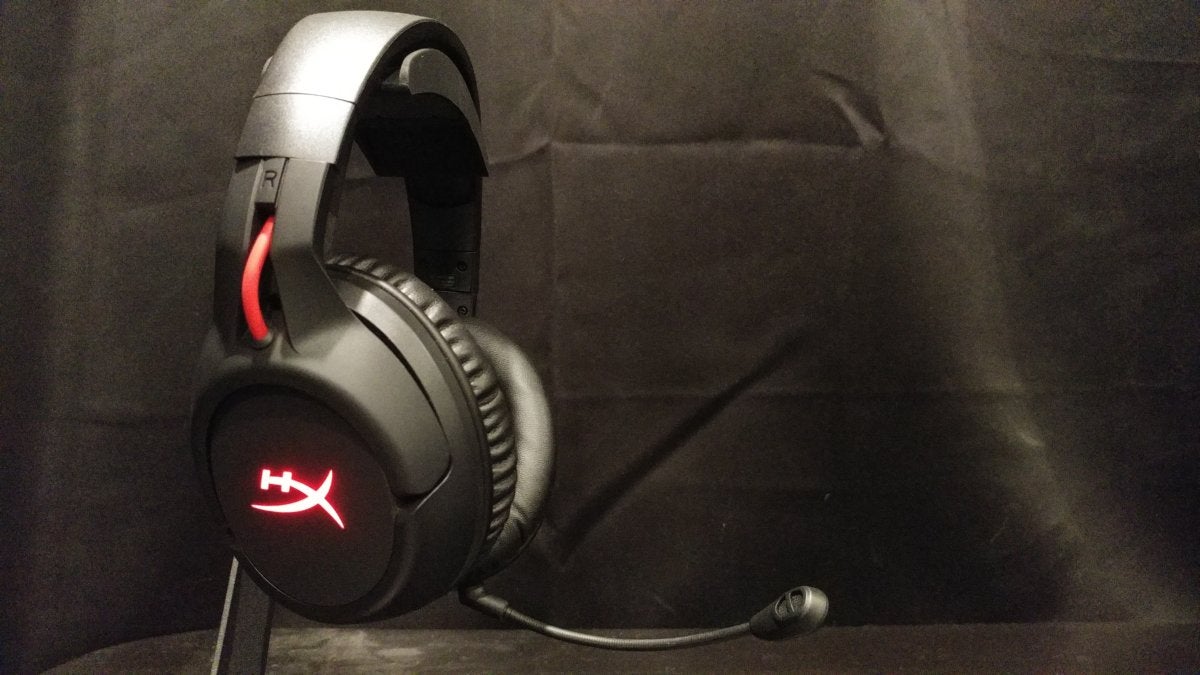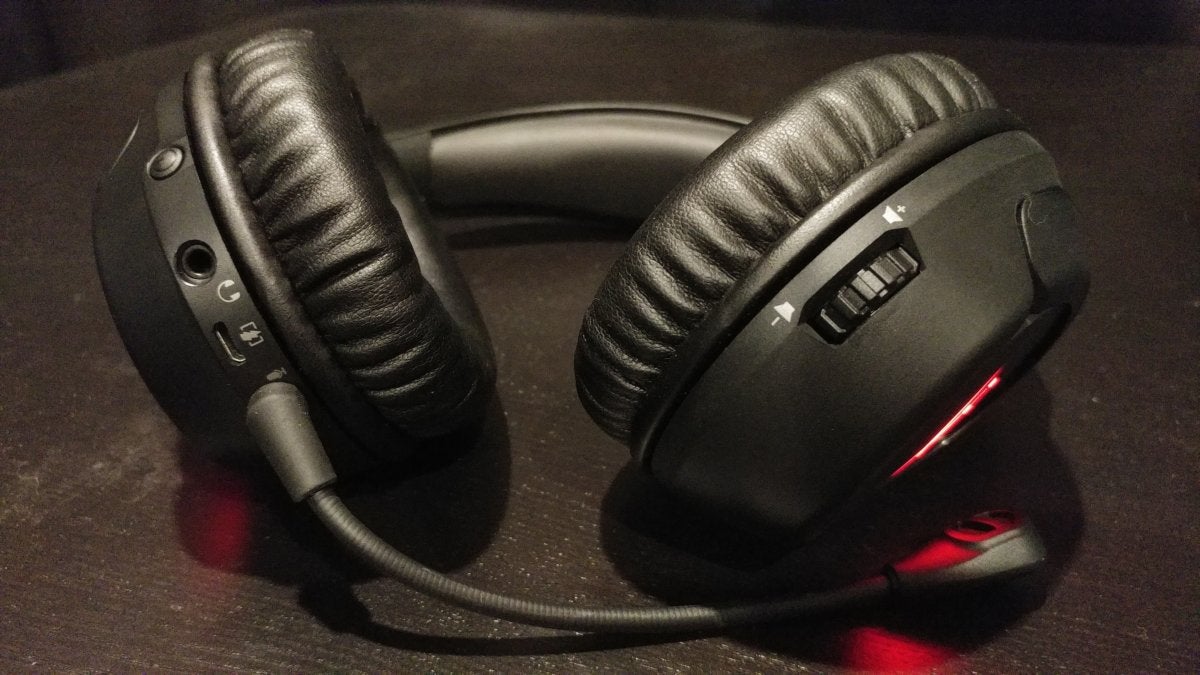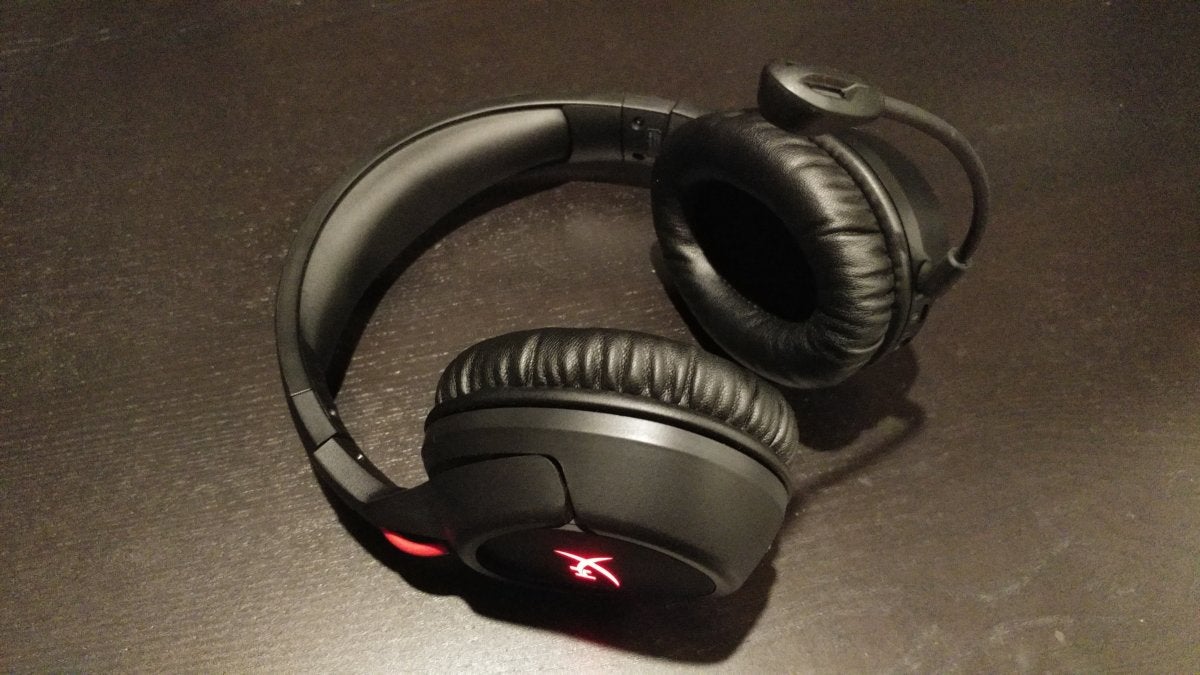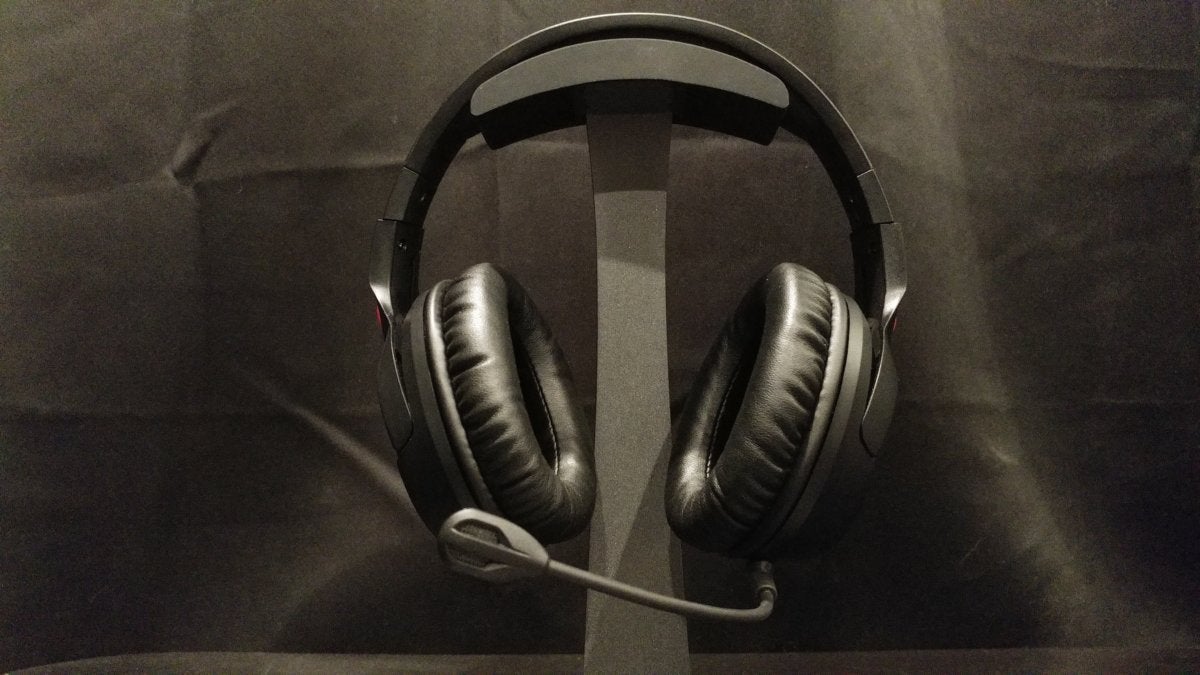HyperX Cloud Flight review: A solid wireless headset joins the venerable Cloud line - wordaboricand1983
At a Glimpse
Expert's Paygrad
Pros
- Audio is water-washed and adjusted
- Incredible noise closing off, symmetrical at moderate volumes
- Comfortable, with illogical built-in controls
Cons
- None software means few options for enthusiasts
- Mike is passable, merely nothing primary
- Expensive compared to the competition
Our Verdict
HyperX's debut receiving set headset is missing some key features, comparable New World chat mix and mike monitoring, just it looks good, sounds great, and feels excellent. Another competitor for our $150 headset pick.
You knew information technology was approach eventually: A wireless HyperX headset. I'm surprised it took so long. I've seen probably half a dozen different HyperX headset models cross my desk in the last few years—the original Cloud and its USB-enabled Cloud Deuce follow-up, the floating headband Revolver and Revolver S models, the budget-friendly Stinger, the dual-chamber Cloud Alpha—but whol wired, until now.
The HyperX Cloud up Escape is first to ditch the cables, so the obvious head: Do the Mottle line's famed console and audio fidelity carry over to its receiving set debut? We went hands-happening to find out.
This review is part of our roundupof best gaming headsets . Go there for details on competitive products and how we tested them.
Learning to fly
The Cloud Escape is a more traditional headset contrive than I'm used to out of HyperX. I always expected a wireless HyperX headset to wait more like the original Cloud up, with its exposed aluminiferous forks—or steady the Cloud Six-shooter and its floating headband. Instead, the Cloud Flight looks a raft like the lowest-end HyperX headset, the budget-comradely Cloud Stinger.
 IDG / Hayden Dingman
IDG / Hayden Dingman Lots of plastic, is what i'm saying. There's a sturdy piece of metal reinforcing the headband, but the more visible pieces of the Dapple Flight are all shaping. There's a soft-spot finish, sol it still feels semifinal-luxurious, simply it doesn't like a sho scream "high-end" like a whole sle of HyperX's work, nor is the headset's profile as sleek.
That said, HyperX's trademark comfort is mostly intact. Both the ears and the headband sport a generous amount of padding, covered in a soft imitation leather. Past Cloud models have been more comfortable, but non much—which is saying something, given that the Cloud Flight has to incorporate the weight of the wireless telephone receiver and battery to a fault. Prohibited of the box I noticed a slight pinch around the jaw, but that went away As the headset got more use.
There's some heat buildup ascribable the leatherette, but it's not unfortunate and my beard prefers leatherette to mesh anyway. (The latter always pulls when I take it off.) The Befog Flight's earcups besides swivel 90 degrees—another Fog Stinger feature film—which makes it easy to rest around your neck, especially when the mike isn't attached.
Speaking of which: The Cloud Flight's mike detaches. Not really a surprise—that's the case with nigh HyperX headsets. It's a act odd for a wireless headset though. On the some other hand, you could use the Sully Flight in public without drawing too much attention.
 IDG / Hayden Dingman
IDG / Hayden Dingman Inbuilt headset controls receive always been one of HyperX's weak points, sol I'm surprised and delighted to see the Cloud Flying nail IT. There's a volume wheel on the back out of the right capitulum, broad enough to easily find and conform. It's also the only ascertain happening that side of meat, which makes it evening easier. Along the left, you've got the power button, plus 3.5mm ports for aux input and the microphone, and a MicroUSB charger.
Best of all: The entire side of the left earcup clicks in to mute surgery unmute the microphone. HyperX isn't the first one to implement this system, but I wish IT were more shared. It's so quick and painless, likely s only to flip-to-mute.
The Sully Flight is also the first HyperX headset to feature LEDs. Pretty wild, that it took until 2018 for HyperX to reach this point. Hope you're fortunate with red though, since these aren't RGB LEDs. Just…red. Turning them off might be the smarter solution anyway. Threefold-tapping the power button volition disable the LEDs, which then lets you reach adequate to 30 hours of assault and battery life. I'd rather that than red LEDs, any day. I took the Cloud Flight on a weekend trip and didn't take up to charge it the integral clock. Perfect.
Totally by myself
The Cloud Flight is great for go down, too. That's not where I'd usually start a give-and-take about a headset's audio fidelity, but the Cloud Flight has a stunning amount of noise isolation. It's the boast I've detected most—in airports, in hotels, in restaurants, on planes, and even out in my own flat. We've reviewed other closed-back designs, which always entail a careful amount of resistless noise closing off, only the Cloud Flight is howling. Everything away the headset is muted, and anything more than two feet away mightiness as well not exist true with my own medicine or games set to merely moderate volumes. It's staggering.
 IDG / Hayden Dingman
IDG / Hayden Dingman Audio fidelity doesn't rather match HyperX's high-pee mark, the Cloud Alpha, but it's still pretty neat. The sound stage is a bit narrower than I'm secondhand to from HyperX, but there's a luck of left-far-right play regardless. Better than most of the contender certainly—I'd rank the Cloud Flight above SteelSeries's Arctis 7 and Barbary pirate's Void Pro e.g..
Out of the boxwood you get a very balanced sound, with what sounds like a lean bass bump and possibly a knock in the upper-mids. The result is a good balance between medicine and games/film, clean and right for the old, just still comparatively intense and impactful for the latter.
You'd better honey the default settings though, because HyperX continues to stick to its no-software roots. That way no easy way to line up EQ settings, atomic number 102 style to disable the LED lighting permanently, no way to varan battery life, no authorized way to fine-tune the microphone. This problem isn't particularised to the Cloud Fledge—it's across all the company's headsets, and has flatbottom been touted by HyperX as a feature in the past.
 IDG / Hayden Dingman
IDG / Hayden Dingman But the abstention seems more conspicuous when HyperX leaves the budget-hardware realm. At $160 number price, the Cloud Flight is far from the unveiling-level prices of the original Cloud. While I'd love for HyperX to ensure its headsets still work without software program, it's a shame those who want to tinker Don't have an easy way to do so. Specially when HyperX makes a point of saying, "Cut the LEDs if you want more than double the barrage life history," it's strange there's no means to do so permanently.
Another notable absence: No chat-mix. Given that feature's cropped up in virtually $150 headsets late, the Cloud Flight's miss is a shame.
The microphone is where software could've helped most, though. Information technology's fine, as is the case with most HyperX headsets. People can hear you. Just it'd be great to adjust the noise room access or add more than microphone monitoring/sidechat (in that location is none). The latter is twice important presumption the significant noise isolation I mentioned above—a pair off times I completed I was essentially yelling into the Overcast Trajectory's microphone, unaware how loud I was being because there's so little feedback.
Bottom business line
A a first try, though? The Cloud Flight mostly lives upfield to HyperX's standards. I'd definitely pluck a few aspects for the succeeding manakin. Mic monitoring, for one. Chat mix. A broader sound.
But the Cloud Flight is much good to be a tune competitor. Excellent
electric battery life-time, a durable design, and enceinte noise closing off bolster up a solid-sounding headset into a top-tier filling. The one projected point for me? At $160, the Cloud up Flight is priced higher than most of the mainstream competition now. Other headsets, like the Logitech G533, manage to do more for less—sometimes much less, dependant on the day's discounts. Given HyperX made a name off undercutting the competition, it's a attaint the Becloud Flying couldn't ascertain a correspondent recession.
Still, a strong showing, and I tail end't wait to watch what the review try brings.
Source: https://www.pcworld.com/article/401893/hyperx-cloud-flight-review.html
Posted by: wordaboricand1983.blogspot.com

0 Response to "HyperX Cloud Flight review: A solid wireless headset joins the venerable Cloud line - wordaboricand1983"
Post a Comment